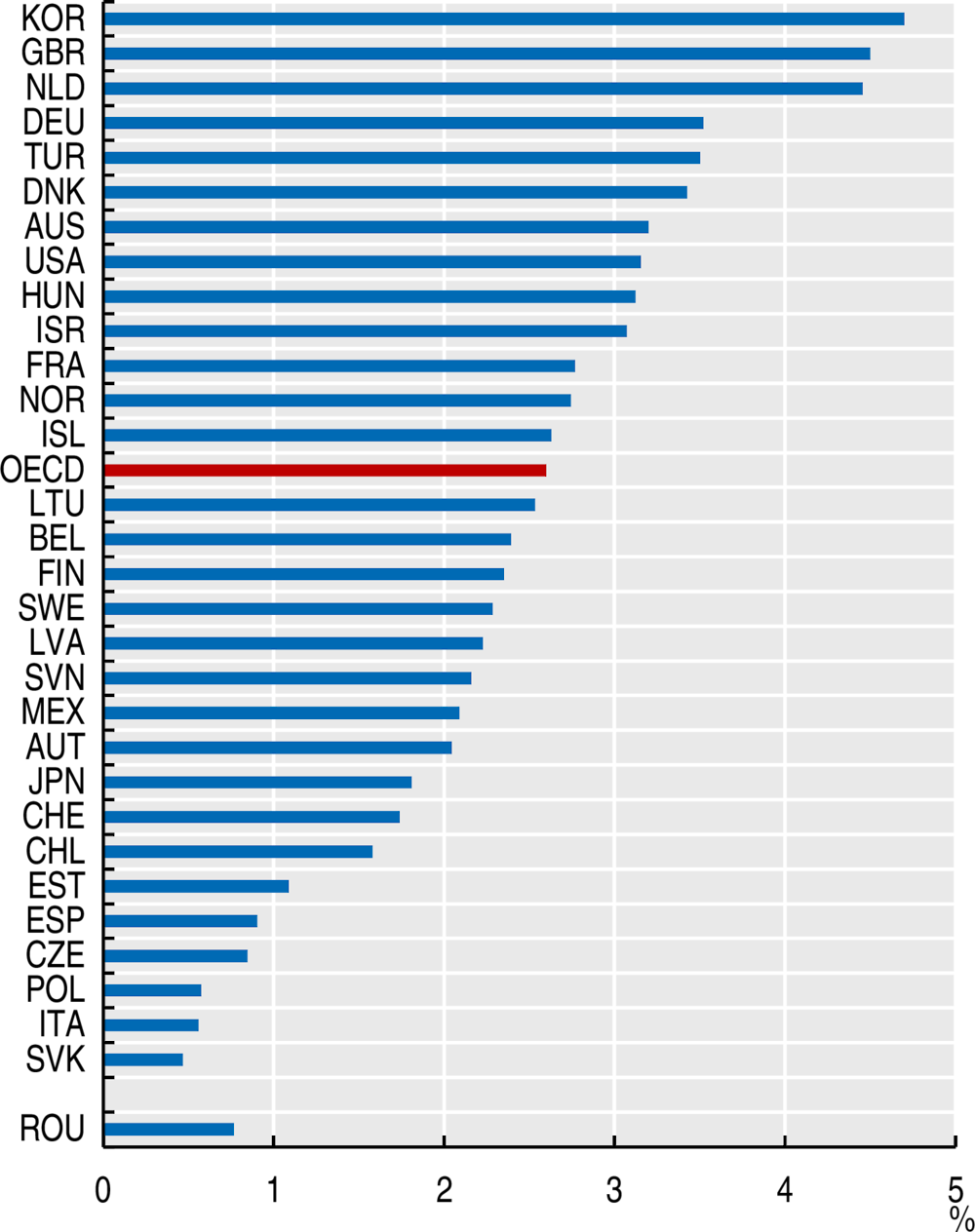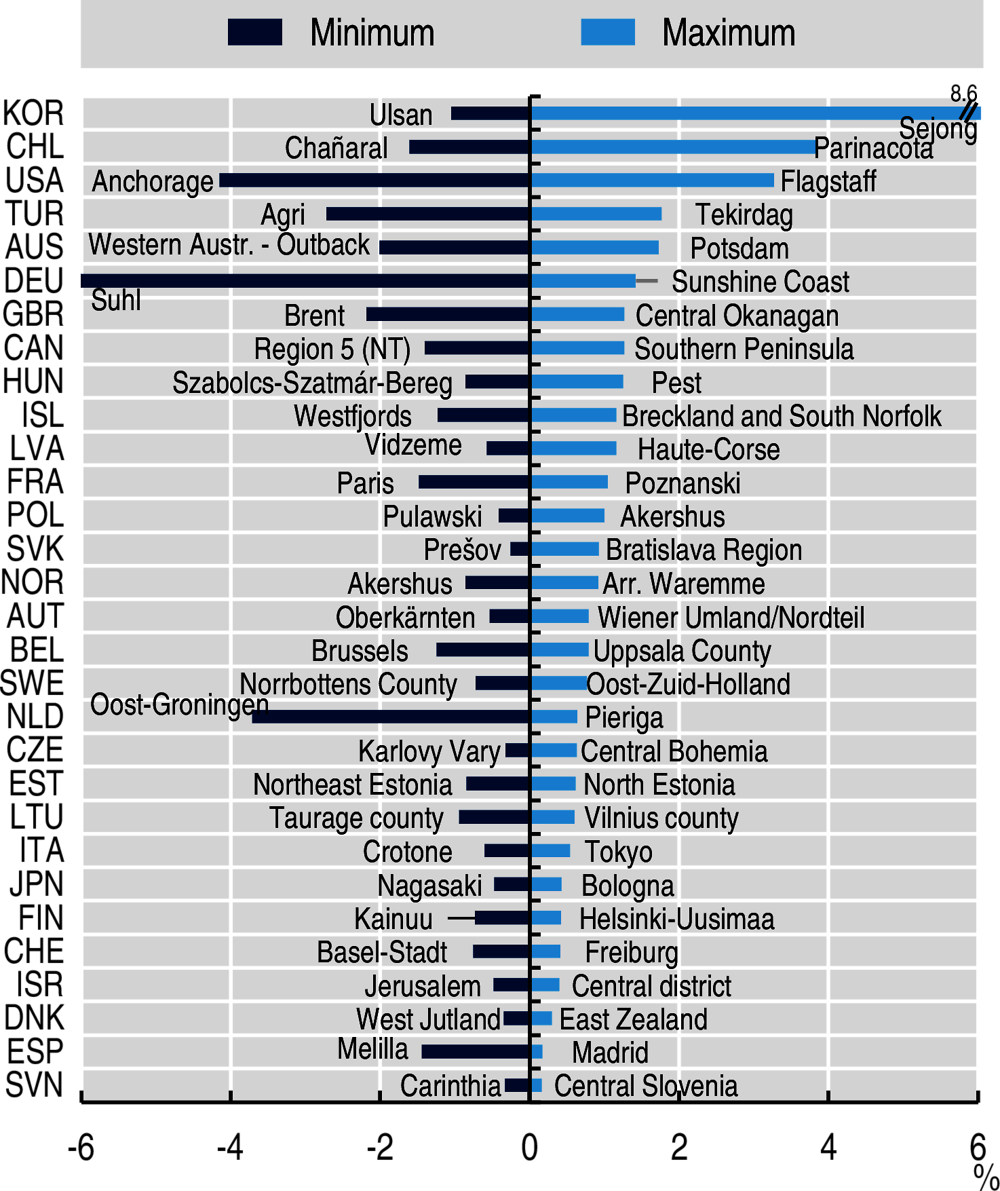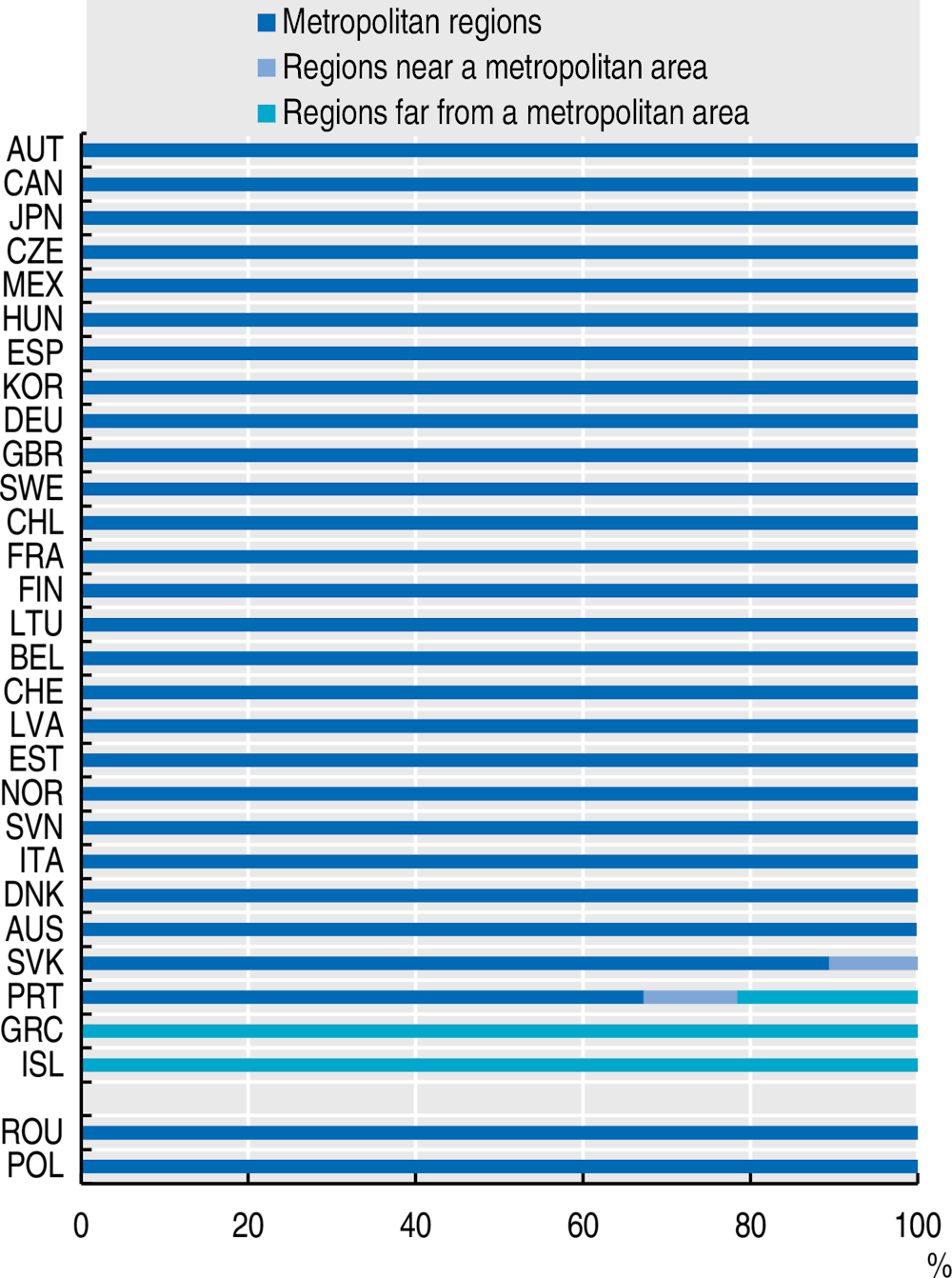Most people who change regions within a country move to metropolitan regions.
People relocate across regions for numerous regions, including to access better jobs or education opportunities or to benefit from better amenities. While some of these flows are not necessarily permanent, they can affect the demographic structure of regions by changing the age composition.
In the 28 OECD countries, 29 million people changed their region of residence each year, on average, between 2016 and 2019. While regional data are not yet available for all countries in 2020, it appears that COVID-19 sparked some temporary moves across regions but reduced other types of inter-regional moves, leading to net declines in inter-regional migration in many OECD countries. In 2019, inter-regional movers corresponded to 2.7% of the total population in the OECD area, ranging from around 5% in Korea, the Netherlands and the United Kingdom (UK) to less than 0.7% in Italy, Poland and the Slovak Republic (Figure 3.9).
Inter-regional migration does not affect all regions of a country in the same way. While metropolitan regions and regions close to a city tend to experience positive net inflows, others are often facing net outflows. In the 28 OECD countries with available data from 2016 to 2019, metropolitan regions and regions near a metropolitan area experienced net in-migration flows, gaining an average of 10.5 and 7 persons per every 10 000 inhabitants respectively (Figure 3.11). In contrast, regions far from a metropolitan area faced net out-migration flows, losing an average of 10 persons for every 10 000 people. Looking at individual regions, Parinacota (Chile), Sejong (Korea) and Flagstaff (United States, US) were the regions with the highest positive annual net migration rate during the last 4 years considered, with gains of 9%, 4% and 3% of the regional population respectively (Figure 3.10). In contrast, during the same period, Suhl (Germany), Oost‑Go (Netherlands) and Anchorage (US) experienced net out-migration that corresponded to losses of 7.8%, 4.2% and 3.7% of their populations.
Young people between 15 and 29 years old account for more than half of the total within-country flows. In almost all OECD countries for which data is available, young people move almost exclusively to metropolitan regions, with educational and professional opportunities likely driving such flows (Figure 3.12). Greece and Portugal are exceptions, as these two countries were the only ones where regions far from metropolitan regions received net inflows of young migrants since 2016.




